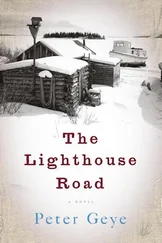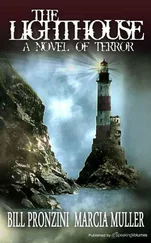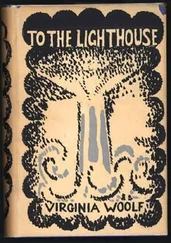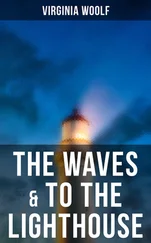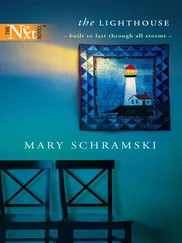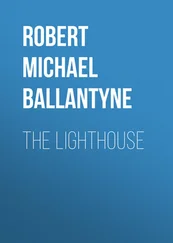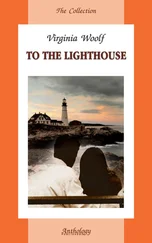Even when the fire was maintained, one light was hardly satisfactory for all Scotland. As the Isle of May proved, coal lights were inefficient, gobbled fuel and expired just when they were most needed, in gales or heavy rain. They required constant supervision, were usually clogged by smoke and could easily be mistaken for fires inland. Thomas was evidently going to have to start from scratch, devising new buildings, new fuels and new solutions if he was to succeed in improving the current situation. But if lighthouses came without templates, so too did their architects. There was, as yet, no such thing as an archetypal engineer, let alone a civil or marine specialist. The qualifications and bureaucracy of the modern profession did not exist 200 years ago. When Samuel Johnson published his famous Dictionary in 1755, he described an engineer as ‘an officer in the army or fortified place, whose business is to inspect attacks, defences, works’. As Louis later pointed out, ‘the engineer of today is confronted with a library of acquired results; tables, and formulae to the value of folios-full have been calculated and recorded; and the student finds everywhere in front of him the footprints of the pioneers. In the eighteenth century the field was unexplored; the engineer must read with his own eyes the face of nature; he arose a volunteer, from the workshop or the mill, to undertake works which were at once inventions and adventures. ’ If he was to design, build, supervise, and maintain each of the NLB’s new lights, Thomas therefore needed to become an inventor in his own right. Much of his work was without precedent, and where tested methods did not already exist, Thomas had to improvise as best he could.
Trudging around the rim of Scotland, he soon realised that his new role entailed far more than merely fitting reflectors. Initially, he used the English lighthouses as his template, but was forced almost immediately to adapt to Scotland’s particular rigours. Most English lights of the time were built safely inland out of dependable local stone. Any building on the stormy coast of Scotland needed to withstand all that the elements could hurl at it; a lighthouse, with its flimsy glass and curlicues of ironwork, required a particular kind of strength. The first four lights were, according to Robert Stevenson, ‘on the smallest, plainest and most simple plan that could be devised, and with such materials as could be easily transported and most speedily erected’. All were built of unembellished stone, with walls thick enough to resist the strongest assaults of water or wind, and with plain lanterns bound with a tight corsetry of metal stanchions. The light at Kinnaird Head was adapted from an old fortified tower, and did just as well withstanding the elements as it had done withstanding invasion.
Despite the economy of the designs, Thomas soon discovered that his workload doubled. His assistants were untrained and his experience was suited more to the refinements of New Town ironwork than it was to designing weather-beaten coastal buildings. Two of the four planned lighthouses were on remote islands, which meant long, dangerous sea journeys and difficulties with supervision. Even on the Mull of Kintyre, which was at least on the mainland, materials could not be landed on the coast and therefore had to be carried over twelve miles of stark moorland to the site. Every slate, every block of stone, every fragment of lens and gallon of fuel, had to be taken on horseback and even then the journey was considered so difficult that only one trip could be made each day. Moreover, many of the materials for the lighthouses were new and untried. It was difficult for instance to manufacture glass large and strong enough for the storm-stressed lanterns, since reinforced glass had not yet been invented and metal supports would only have obscured the light.
Many of Thomas’s experiments worked well in his Edinburgh workshop, but when transported out to the edges of Scotland were found to be impractical or unusable. Where possible, he used local building materials, with the trusted Scottish combination of granite, slate and wood as the basis of the buildings. The delicate mirrored reflectors, however, had to be transported from his Bristo Street workshop by sea to the site, and were sometimes found to be ill-fitted for their purpose. The numbers of reflectors in each light had to be varied, and each one brought its own difficulties of transportation and installation. For a long while the task of constructing the lights seemed so impossible that Thomas had considerable difficulty persuading the incredulous local builders to work for him.
Appointing the first lighthouse keepers also presented unexpected difficulties. In the early years, Thomas looked mainly for retired shipmasters and mariners, either hired locally or brought to him by word of mouth. They too had to be pioneers of a kind; much of their role could only be resolved through experience, and a precise definition of their duties only emerged over time. But they were also responsible for a great deal of delicate and expensive equipment, and Thomas left little to chance. James Park, the first keeper at Kinnaird Head, was instructed to
clean the Reflectors and the panes in the windows every day the proper manner of cleaning the Reflectors is to take off any Oil or Smoke that may be found upon them with soft tow and then rub them with a soft linnen rag and Spanish white or finely pounded Chalk till they are perfectly bright this must be strictly attended to or else a great part of the effect of the lights will be lost…You will light the lamps half an hour after Sun-seting and keep them burning till half an hour before Sunrising every day for which purpose you must attend them every two or three hours throughout the night to help any of the lights that may be turning dim but you must take care not to stand before the lights any longer than is necessary of that purpose and you are to observe that in stormy weather you must not leave the light room the whole night.
In return, Park was given a shilling per night, free lodging, and pasturage for a cow. He remained contentedly in the job for a decade, before retiring aged almost eighty.
There were also some staffing difficulties Thomas could not have foreseen. At North Ronaldsay, the keeper took good relations with his neighbours too far, and had started his own local black market in lighthouse fuel. ‘The keeper,’ Smith wrote indignantly in his report to the NLB, ‘has acted the most dishonest and infamous part that can be imagined. He has by his own confessions before a number of witnesses sold the oil sent him in very great quantities throughout North Ronaldsay and the neighbouring island of Sanday, so that his conduct is notorious in the whole country.’ Smith rapidly discovered that, despite all his efforts, the keepers themselves kept introducing an unwelcome dose of chaos.
Perhaps most striking of all was his pained discovery that not everyone wanted or encouraged the lighthouses. Thomas and his Stevenson successors found that they did not merely have to compete with primitive materials and impossible geography, they also found themselves at war with inertia, hostility, superstition and disbelief. They had to do battle with landowners and government to get the lights built, and they found themselves challenging the prejudices of those whom those lights were supposed to save. Many people did not believe that lighthouses would work; many believed they were too expensive, many saw them as a form of religious defiance. Many people simply did not see the need for them. During the original inquiry into the need for a light on the Isle of May back in 1635, all the predictable excuses had arisen: the light would be too weak to be seen, the shipowners would be financially broken by the charges, there was no need for a light, the rock itself was not dangerous.
Читать дальше

